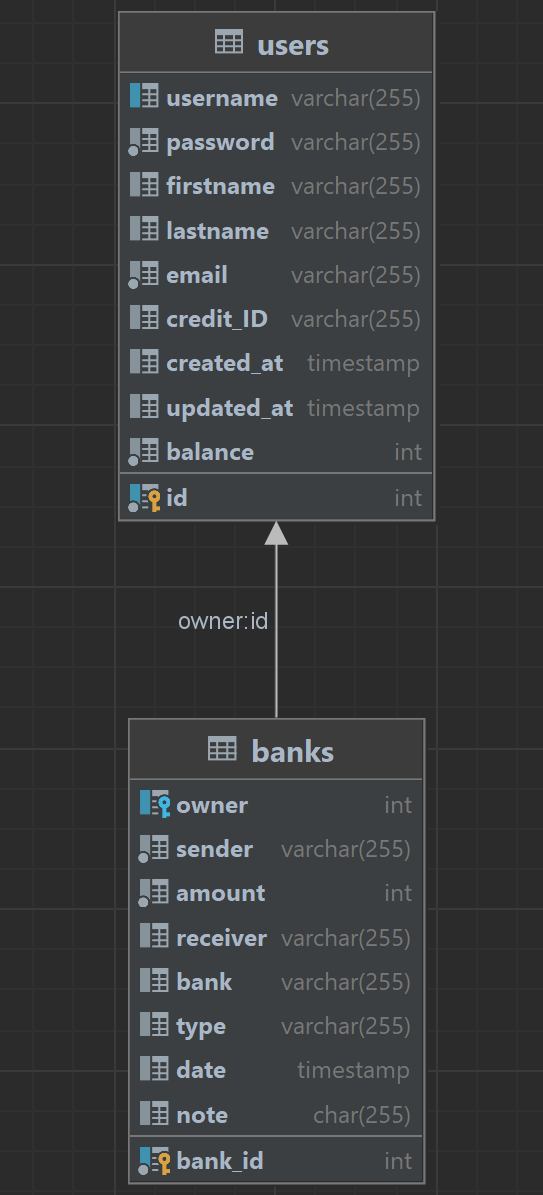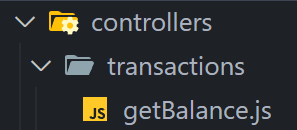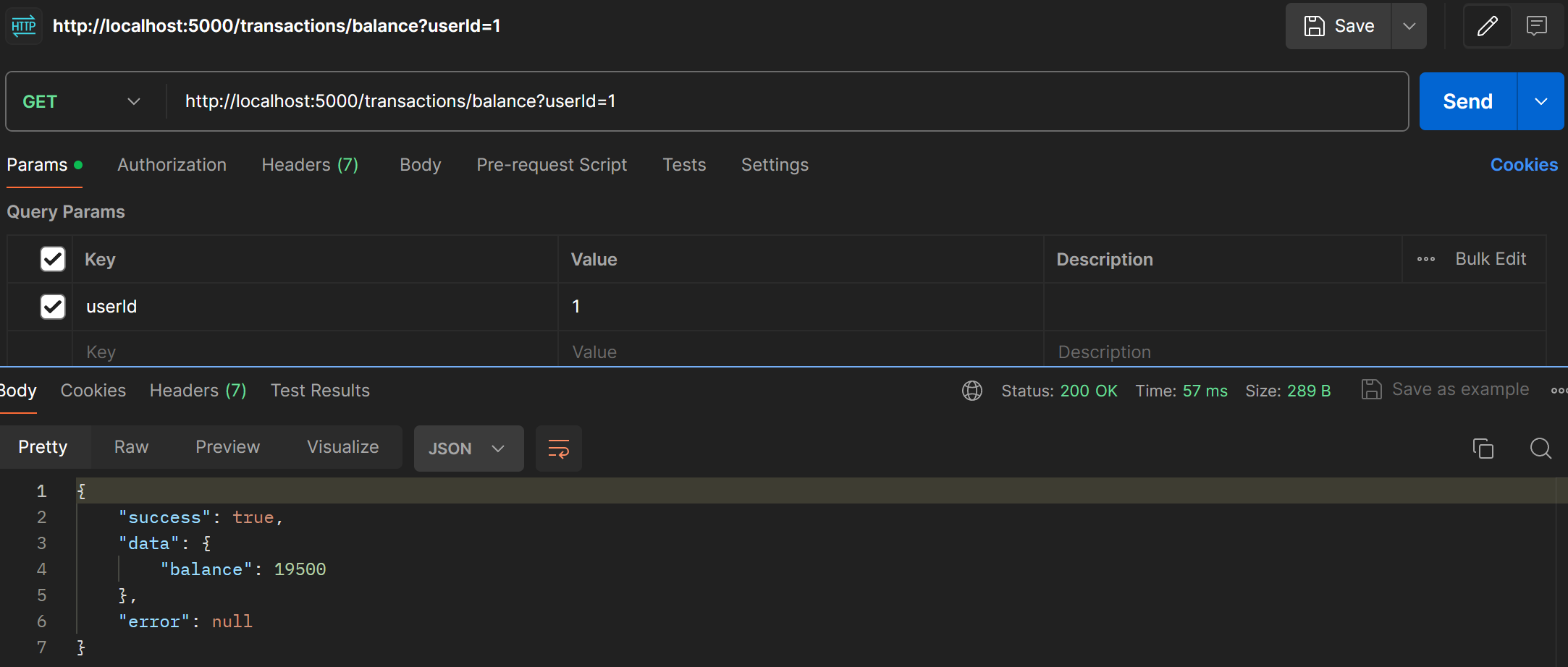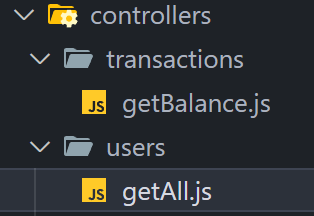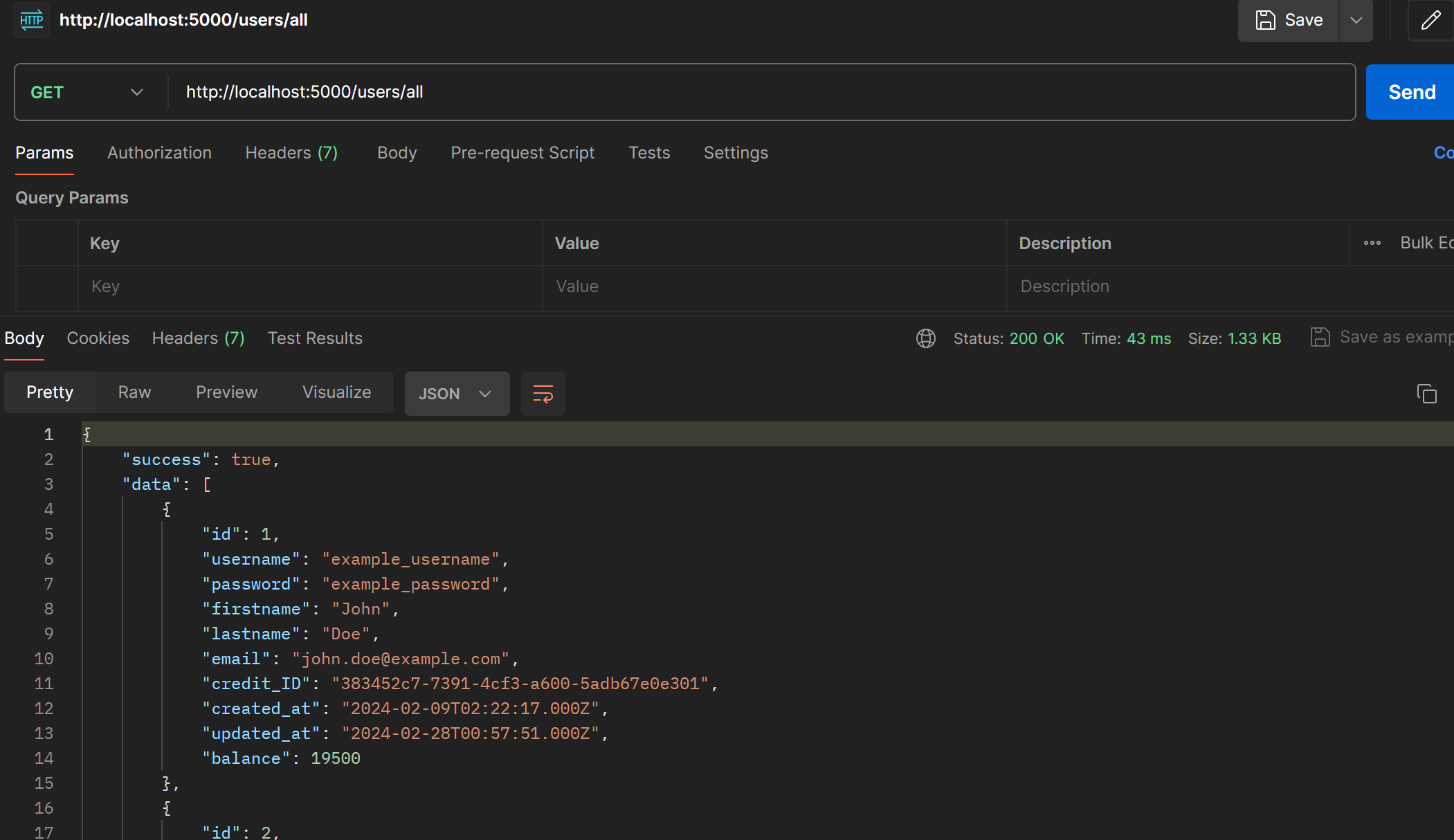Example of Read
Let's write the endpoint that query user balance data from the database and response to the user.
- This the schema of
sampledatabase 👇🏻
1. Let's create a first endpoint query balance from the database by create getBalance.js in controller->transaction directory
then use the code below.
- In the path
/balance, it will query from balance of theuserstable. - We will use the
.query()method to insert your SQL query. - The second argument to the
.query()method is a callback function(err, rows), which will be called when the MySQL send the response. The callback function takes two arguments,errandrows, which represent theerrorof the database androwsobjects for response data from MySQL database. Ifwe found an error, we will response the error message to the client.else, we will returnrowwhich is data from theuserstable from the database. 👇🏻
const connection = require("../../services/database");
const getBalance = async (req, res) => {
// Assign the params as a variable
const userId = req.query.userId;
// Regex to check the userId is a number only or not
const checkUserId = new RegExp(/^\d+$/).test(userId); // Boolean
// Check if the userId is not exist or is not a number, return json with an error
if (!userId || !checkUserId) {
return res.json({
success: false,
data: null,
error: "user_id is invalid",
});
}
// Query the data from the database
try {
// Get user balance data
const userBalanceQuery = await connection
.promise()
.query(`SELECT balance FROM users WHERE id = ${userId}`);
const userBalance = userBalanceQuery[0][0];
// Check if user data is empty
if (!userBalance) {
return res.status(404).json({
success: false,
data: null,
error: "User not found",
});
}
// Return data to the client if success
return res.json({
success: true,
data: userBalance,
error: null,
});
} catch (error) {
console.error("Error:", error);
return res.status(500).json({
success: false,
data: null,
error: "Internal server error",
});
}
};
module.exports = getBalance;2. Create transaction.js under routers and create router for transaction
const express = require("express");
const getBalance = require("../controllers/transactions/getBalance");
const transactionsRouter = express.Router();
transactionsRouter.get("/balance", getBalance);
module.exports = transactionsRouter;
3. Import transactionsRouter into index.js and make a path
const express = require("express");
const app = express();
// Add
const transactionsRouter = require("./routers/transactions");
const port = 5000;
app.use(express.json());
// Add
app.use("/transactions", transactionsRouter);
app.listen(port, () => {
console.log(`Example app listening on port ${port}`);
});
4. Let's run your application again, and use postman with localhost:5000/transactions/balance?userId=1
- You will see the result like this.
Another example of Read
1. Create getAll.js under directory controller->users
2. Create an endpoint query all users from the database using the code below in getAll.js
const connection = require("../../services/database");
const getAll = async (req, res) => {
// Query the data from the database
try {
// Get user data
const userDataQuery = await connection
.promise()
.query(`SELECT * FROM users`);
const userData = userDataQuery[0];
// Check if user data is empty
if (!userData) {
return res.status(404).json({
success: false,
data: null,
error: "There is no user data in the database",
});
}
// Return data to the client if success
return res.json({
success: true,
data: userData,
error: null,
});
} catch (error) {
console.error("Error:", error);
return res.status(500).json({
success: false,
data: null,
error: "Internal server error",
});
}
};
module.exports = getAll;3. Create users.js under directory routers and write
const express = require("express");
const getAll = require("../controllers/users/getAll");
const usersRouter = express.Router();
usersRouter.get("/all", getAll);
module.exports = usersRouter;4. Import usersRouter into index.js and make a path
const express = require("express");
const app = express();
const usersRouter = require("./routers/users");
const transactionsRouter = require("./routers/transactions");
const port = 5000;
app.use(express.json());
app.use("/users", usersRouter);
app.use("/transactions", transactionsRouter);
app.listen(port, () => {
console.log(`Example app listening on port ${port}`);
});5. Let's run your application again, and use postman with localhost:5000/users/all
- You will see the result like this.

